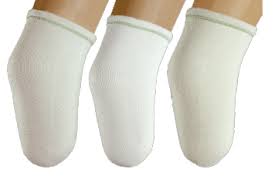Prosthetics
O & P Labs utilizes the very latest technology and devices to create a custom prosthesis made perfect for you! Whether you need a new prosthesis for a recent amputation or repairs and new components, O & P Labs is here to help!
Click HERE or call 888.432.5488 to request your complimentary copy of our Amputee Packet!
Amputation Packets include:
- An Orthotics & Prosthetics Labs Folder
- A copy of "InMotion" A magazine dedicated to living well with limb loss.
- A copy of “You Have a Choice”, an O & P Labs Publication
- A copy of “First Step”, a 99 page guide for adapting to limb loss (an Amputee Coalition publication)
Now available! : A new publication, “Limb Loss Resource Guide”. A practical guide for preparing for, adapting to, and living with limb loss.
The Process & What You Need To Know
Obtaining Your First Prosthesis
1. INITIAL EVAL: If seen post-surgery, we will provide you with an amputee packet full of information and fit an IPOP and/or shrinker as needed to prepare your limb for a new prosthesis.
2. PAPERWORK: As your limb is healing, some paperwork will need to be taken care of:
a. A functional evaluation may need to be completed by a physical therapist to determine what components will work best for you (If you are not working with a physical therapist, speak to our front desk and we can coordinate an evaluation appointment for you!)
b. A prescription and office notes will need to be obtained from your Doctor (if your doctor has not provided one to you, please see our front desk for paperwork to request one from your doctor)
c. Depending on your insurance, Prior authorization may need to be obtained.
3. MEASURE: Once your limb is healed, staples have been removed, and swelling has decreased you will be measured for a liner.
4. CASTING: At this stage, we will take an impression of your limb over your new liner. Your prosthetist can explain to you how this liner can be worn in conjunction with your shrinker to help prepare your limb further for the prosthesis. A socket will be made from the cast that was taken and componentry will be ordered.
5. DELIVERY: Once the socket is completed and componentry has been delivered to our office you will be seen to try it all on, this is your finished preparatory or “temporary” prosthesis.
Obtaining Your Next Prosthesis or New Socket
1. HOW DO YOU KNOW YOU MAY NEED A NEW PROSTHESIS?: As you begin to walk more on your temporary prosthesis you may begin to notice a loss of volume in your limb due to using it more and may realize that you feel more comfortable walking with a prosthetic leg. You may also feel the componentry we once chose for you is now holding you back. These are signs that you may be ready for a new prosthesis also known as a definitive or “permanent” prosthesis.
2. FUNCTIONAL EVAL: A physical therapist will need to complete a new functional evaluation to determine what components will work best for you now that you have more experience with a prosthesis (If you are not working with a physical therapist, speak to our front desk and we can coordinate an evaluation appointment for you!)
3. FUNCTIONAL LEVEL RESULTS: If your functional level is still the same, it is an indication that you are still in the best componentry for you! In this case we will keep the same componentry and work on adjusting the prosthesis you have. If your function level has increased that means we should provide you with componentry that suits your improvements; this will result in a new prosthesis (one preparatory prosthesis and one definitive prosthesis.)
4. PAPERWORK: To provide you with a new prosthesis with different componentry we will need some additional paperwork:
a. A prescription and office notes will need to be obtained from Doctor (if your doctor has not already provided one to you, please see our front desk for paperwork to request one from your doctor)
b. Depending on your insurance, prior authorization may need to be obtained.
5. CASTING: Once your paperwork and authorization have been obtained, you will be casted and measured and your new componentry will be ordered.
6. TEST SOCKET FITTING: A test socket will be made and componentry will be ordered. Once the test socket is completed and componentry has been delivered to our office you will be seen to try it all on.
7. TEST SOCKET FOLLOW UP: At this appointment, a few things could be determined:
a. The test socket fits perfectly and we will complete a finished socket.
b. The test socket needs minor adjustments, which we will complete in office for you to try out.
c. The test socket does not feel good at all and another cast and test socket can be done.
8. DELIVERY: Once the socket is completed and componentry has been delivered to our office you will be seen to try it all on, this is your finished definitive or “permanent” prosthesis.
Terminology
Check/Test Socket – A temporary socket generally made of transparent plastic that is used by the prosthetist to evaluate the fit of the socket on your limb.
Prosthetic Components – Consists of the limb, socket, knee, and feet.
IPOP – Also known as, Immediate Post-Operative Prosthesis. It is an artificial limb that is applied in the operating room after the amputation has occurred.
Liner – A sleeve or covering of the residual limb that is used for suspension, cushioning and protection. The “liner” is usually made of a gel and fabric material.
Permanent/definitive prosthesis – This is the final socket for the prosthesis. It is made of carbon fiber which is light weight and very durable. You can choose to have it made of flesh color, specialized with a design, or just carbon.
Prosthesis – An artificial body part. The two main types of prosthetic legs are, below the knee prosthesis (BK) and above the knee prosthesis (AK).
Prosthetist – A trained healthcare practitioner who evaluates, fabricates, fits and adjusts prosthetic devices.
Shrinker – A prosthetic sock created of elastic material that is used in reducing swelling of the residual limb.
Socket – The part of the prosthesis that fits around and protects the residual limb; usually made of thermoplastic, laminated, or carbon composite material.
Socket replacement – You will need a socket replacement if your limb has changed shape or if you have lost/gained weight. Your socket is important for the fit, comfort, and protection of the limb.
Socks – A sock that is fabricated to fit the residual limb. It is used to manage the loss of volume in the residual limb throughout the day.
Temporary/preparatory prosthesis – A prosthesis that is fabricated soon after amputation. This prosthesis is used until post-surgical swelling has subsided. A temporary prosthesis is fit about four to twelve weeks after surgery, depending on how well and quickly the suture line heals. The temporary prosthesis is your first prosthesis.
Transfemoral – Amputation that occurs at a level above the knee joint but below the hip joint. (Above Knee Amputee - AKA).
Trans tibial – Amputation that occurs at a level below the knee joint but above the ankle joint. (Below Knee Amputee BKA).
Prosthetic Supplies

Orthotics & Prosthetics labs also provides any supplies you may need for care and use of your prosthesis. From prosthetic socks and liners to lotion for your residual limb and more, O & P Labs is able to provide what you need for life with a prosthesis.
